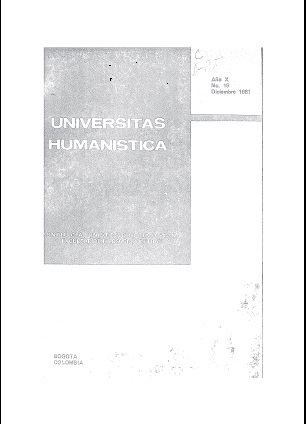Abstract
Las comunidades prehispánicas Chibchas de la Sabana de Bogotá poseían una jerarquía de unidades socio-territoriales —uta, capitanía y comunidad— que estaban vinculadas mediante parentesco y lazos matrimoniales. Preferencialmente, el matrimonio tenía un sesgo matrilateral entre primos cruzados, con residencia marital virílocal y eventual residencia avunculocal para los hijos. Los Chibchas de la Sabana de Bogotá eran uniformemente matrilineales. La herencia se determinó matrilinealmente tanto entre los plebeyos como entre las familias de mayor status, así mismo la posición política. Los derechos de tierra también se heredaban matrilinealmente entre los Chibchas de la pre-conquista. En e! período colonial, con la introducción de las nuevas formas españolas de herencia, adquisición y tenencia de tierras, impuestas por los corregidores y los sacerdotes, esta herencia patrilinal de la tierra y posiblemente de la propiedad mueble vino a coexistir al lado de los patrones matrilineales tradicionales.

This journal provides immediate open access to its content on the principle that making research freely available to the public, encourages greater global exchange of knowledge.
The journal Universitas Humanística is registered under a Creative Commons Attribution 4.0 International Public License. Thus, this work may be reproduced, distributed, and publicly shared in digital format, as long as the names of the authors and Pontificia Universidad Javeriana are acknowledged. Others are allowed to quote, adapt, transform, auto-archive, republish, and create based on this material, for any purpose (even commercial ones), provided the authorship is duly acknowledged, a link to the original work is provided, and it is specified if changes have been made. Pontificia Universidad Javeriana does not hold the rights of published works and the authors are solely responsible for the contents of their works; they keep the moral, intellectual, privacy, and publicity rights.
Approving the intervention of the work (review, copy-editing, translation, layout) and the following outreach, are granted through an use license and not through an assignment of rights. This means the journal and Pontificia Universidad Javeriana cannot be held responsible for any ethical malpractice by the authors. As a consequence of the protection granted by the use license, the journal is not required to publish recantations or modify information already published, unless the errata stems from the editorial management process. Publishing contents in this journal does not generate royalties for contributors.


